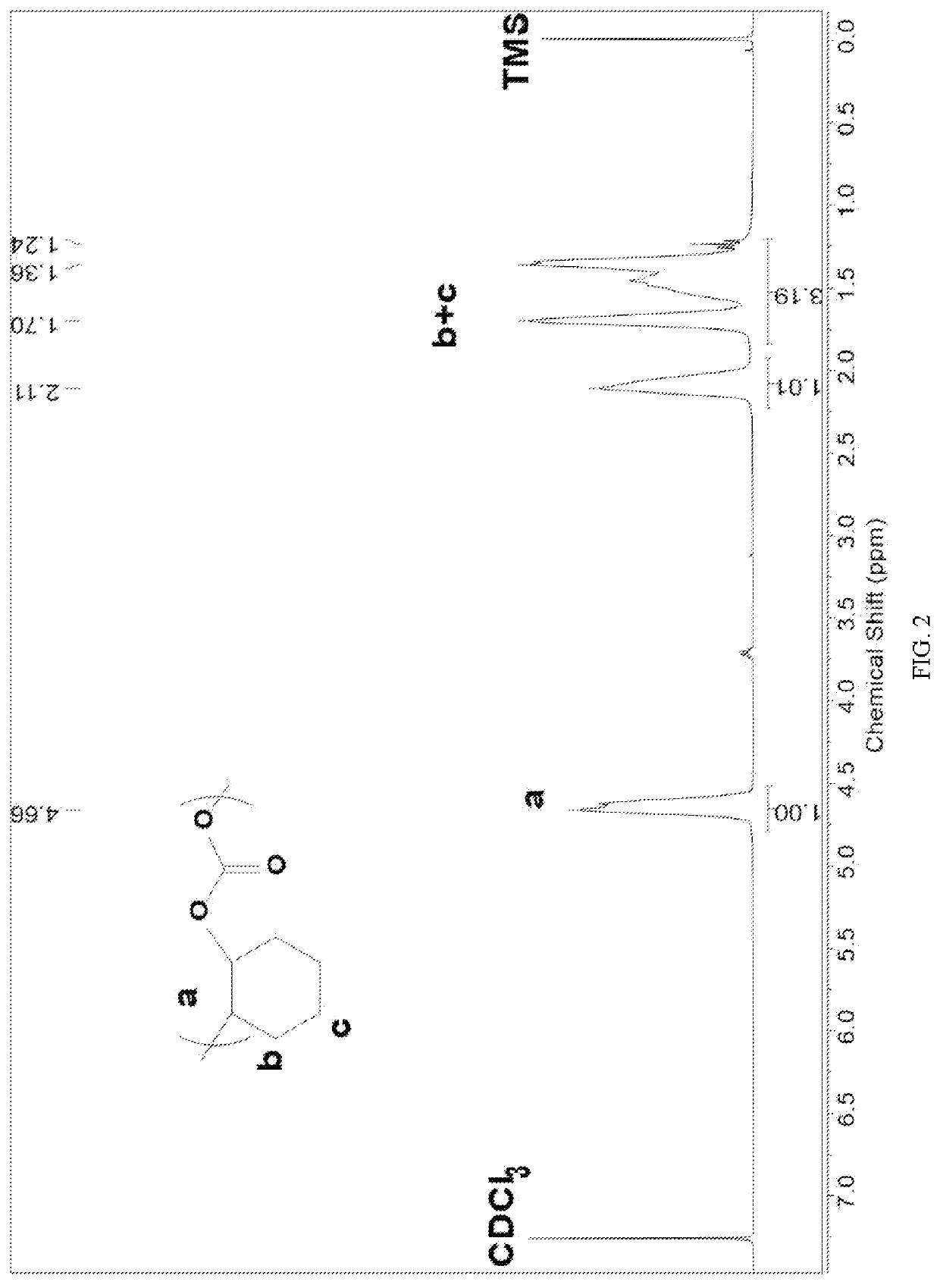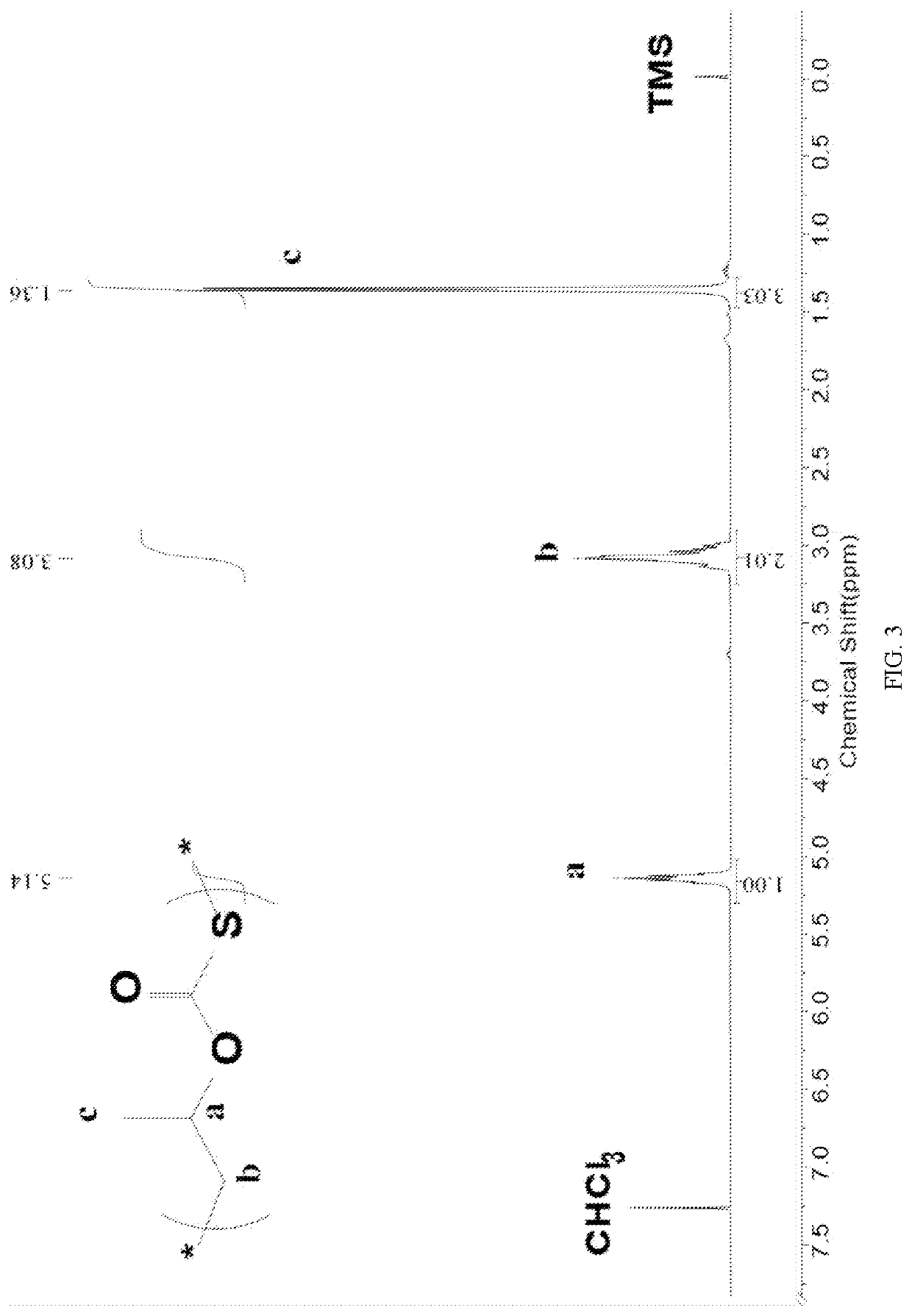Lewis acid-base pair catalytic initiator and application thereof
a technology of catalytic initiator and lewis acid, which is applied in the field of catalytic initiators, can solve the problems of catalytic activity, the tof of this system cannot reach 113 h, and the copolymerization of carbon dioxide with propylene oxide cannot achieve 100% alternating degree of polycarbonate, etc., and achieve the effect of maximizing the atomic economy
- Summary
- Abstract
- Description
- Claims
- Application Information
AI Technical Summary
Benefits of technology
Problems solved by technology
Method used
Image
Examples
embodiment 1
ing-Opening Polymerization for Synthesizing Polyether
[0082]Before the polymerization reaction, a 10 mL autoclave is placed at 110° C. for about 2 h to remove water and cooled to room temperature in a desiccator; several masses of Lewis base 3 N,N,N′,N-tetraethyl ethylenediamine (E-E) and Lewis acid triethylborane(TEB) are added to the reactor in a molar ratio of 1:2; propylene oxide (PO) are added, the molar ratio of Lewis base3 to propylene oxide (PO) is 1:1000. The autoclave is then closed and placed in an oil bath at 60° C. under autogenous pressure for 3 h. After the reaction is completed and cooled to room temperature, the crude product is first dissolved in tetrahydrofuran, with which a polymer is precipitated in a mixture of ethanol / deionized water / hydrochloric acid. The polymer is washed three times and dried under vacuum to a constant weight.
[0083]The content of each unit in the polymer is calculated by NMR hydrogen spectroscopy, and the molecular weight and molecular weigh...
embodiment 2
ing-Opening Polymerization for Synthesizing Polyether
[0084]Before the polymerization reaction, a 10 mL autoclave is placed at 110° C. for about 2 h to remove water and cooled to room temperature in a desiccator; several masses of Lewis base 4 N,N,N′,N′-tetraethylmalondiamine (E-P) and Lewis acid triethylaluminum (TEAl) are added to the reactor in a molar ratio of 1:4; propylene oxide (PO) are added, the molar ratio of Lewis base 4 to propylene oxide (PO) is 1:2000. The autoclave is then closed and placed in an oil bath at 40° C. under autogenous pressure for 2.5 h. After the reaction is completed and cooled to room temperature, the crude product is first dissolved in tetrahydrofuran, with which a polymer is precipitated in a mixture of ethanol / deionized water / hydrochloric acid. The polymer is washed three times and dried under vacuum to a constant weight.
[0085]The content of each unit in the polymer is calculated by NMR hydrogen spectroscopy, and the molecular weight and molecular w...
embodiment 10
t Copolymerization for Synthesizing Poly(Monothiocarbonate)
[0102]Before the polymerization reaction, a 10 mL autoclave is placed at 110° C. for about 2 h to remove water and cooled to room temperature in a desiccator; several masses of Lewis base 6 N,N,N′,N′-Tetramethylethylenediamine (M-E) and Lewis acid triethylborane (TEB) are added to the reactor in a molar ratio of 1:2; COS, propylene oxide (PO) (herein the molar ratio of COS to PO is 10:1) and 3 mL of dimethyl sulfoxide (DMSO) are added; the molar ratio of Lewis base 6 to PO is 1:2000. The autoclave is then closed and placed in an oil bath at 25° C. under autogenous pressure for 2 h. After the reaction is completed and cooled to room temperature, the crude product is first dissolved in tetrahydrofuran, with which a polymer is precipitated in a mixture of ethanol / deionized water / hydrochloric acid. The polymer is washed three times and dried under vacuum to a constant weight.
[0103]The content of each unit in the polymer is calcu...
PUM
| Property | Measurement | Unit |
|---|---|---|
| Temperature | aaaaa | aaaaa |
| Time | aaaaa | aaaaa |
| Temperature | aaaaa | aaaaa |
Abstract
Description
Claims
Application Information
 Login to View More
Login to View More - R&D
- Intellectual Property
- Life Sciences
- Materials
- Tech Scout
- Unparalleled Data Quality
- Higher Quality Content
- 60% Fewer Hallucinations
Browse by: Latest US Patents, China's latest patents, Technical Efficacy Thesaurus, Application Domain, Technology Topic, Popular Technical Reports.
© 2025 PatSnap. All rights reserved.Legal|Privacy policy|Modern Slavery Act Transparency Statement|Sitemap|About US| Contact US: help@patsnap.com



